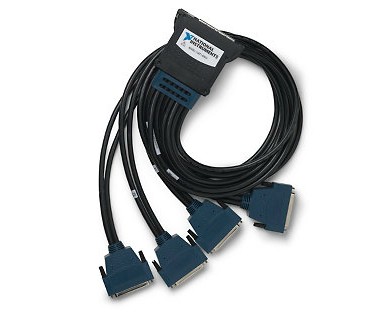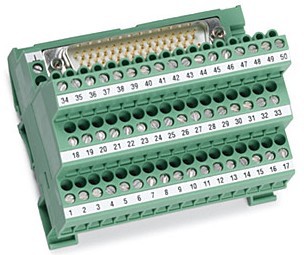How to Connect Signals to the PXI-2530B
Contents
Overview
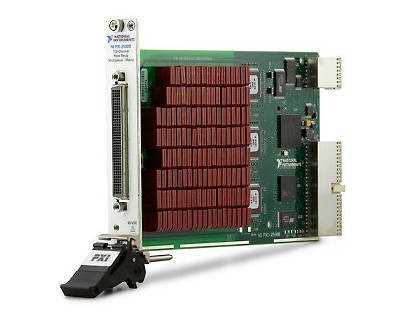
The NI PXI-2530B is a high-density, multiconfiguration multiplexer/matrix switch module. With four multiplexer and three matrix configurations, the PXI-2530B is an excellent solution for complex or high-channel-count systems. Multiplexer configurations include 128x1 (1-wire), 64x1 (2-wire), 32x1 (4-wire), or eight banks of 16x1 (1-wire). Matrix configurations include 4x32 (1-wire), 8x16 (1-wire), or 4x16 (2-wire). You can implement these configurations by selecting the appropriate terminal block. With the speed of reed relays, the PXI-2530B is an ideal front-end component for high-speed measurement devices such as the NI PXI-4070 6½-digit FlexDMM.
PXI-2530B Terminal Blocks
The PXI-2530B topology that you use will impact the terminal block or accessories that are used to connect signals to the switch. There are three terminal blocks available for the PXI-2530B:
- TB-2630B: 128x1 (1-wire), 64x1 (2-wire), and 32x1 (4-wire) multiplexer configurations
- TB-2631B: 4x32 (1-wire) or 4x16 (2-wire) matrix
- TB-2632B: 8x16 (1-wire)
TB-2630B
The NI TB-2630B configures the NI PXI-2530B as a multiplexer with several optional sizes. It creates 128x1 (1-wire), 64x1 (2-wire), and 32x1 (4-wire) configurations instantly. The TB-2630B also accommodates other multiplexer sizes based on the 16x1 building blocks of the PXI-2530B. Connections are made with ribbon cable headers inside the housing.
Below is a summary of how to connect signals to a PXI-2530B using a TB-2630B. For more information than is provided in this tutorial on connecting signals using the TB-2630B please see the TB-2630B Installation Instructions.
The figure below outlines the main components of the TB-2630B:
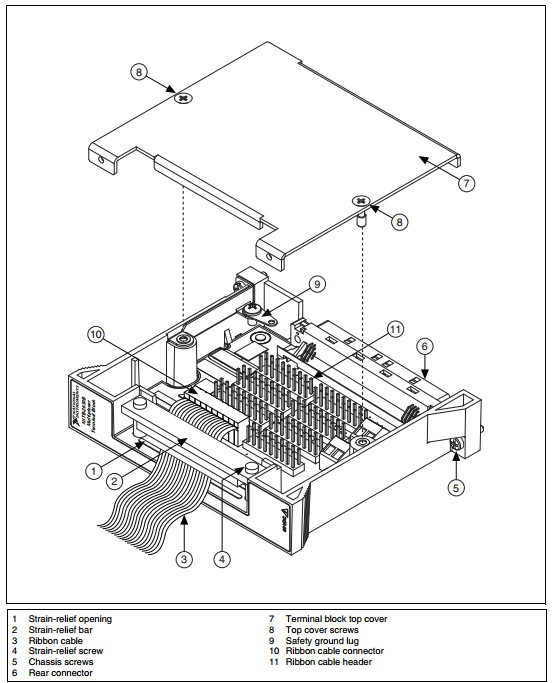
The figure below clearly outlines how the ribbon cable headers on the TB-2630 map to the 8 banks and their respective lines of the PXI-2530B:
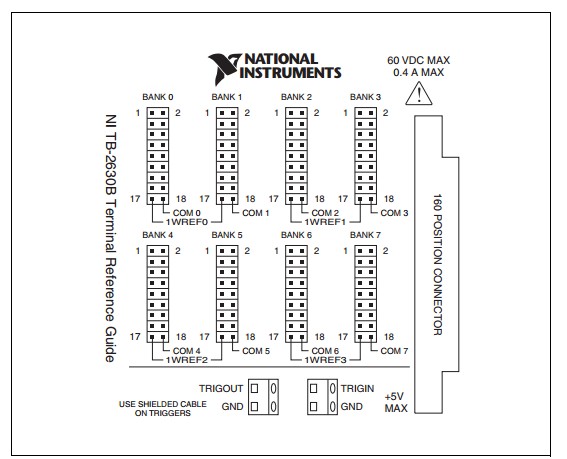
To determine how the pins on each bank map to the channels of a particular multiplexer topology for the TB-2630, open up Pand navigate as follows: NI Switches Help >> Devices >> NI PXI-2530/2530B >> NI PXI-2530B Signal Connections and select either 1-Wire Multiplexer Topologies, 2-Wire Multiplexer Topologies, or 4-Wire Multiplexer Topologies.
Below is a diagram of the TB-2630B PCB board outlining the various connections:
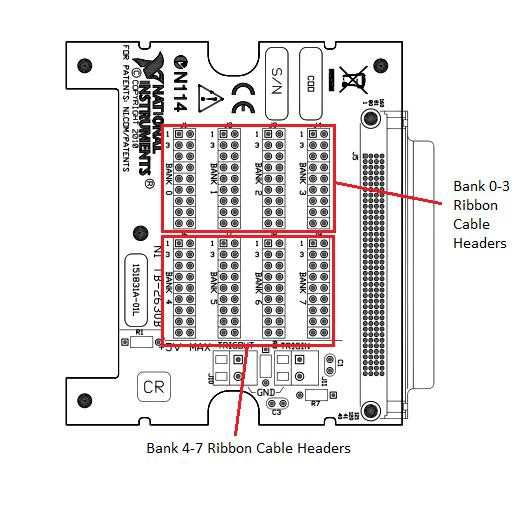
To connect signals to the TB-2630B you will need ribbon cable sockets. Eight 2x9 0.100 inch ribbon cable connectors are included, as seen below:
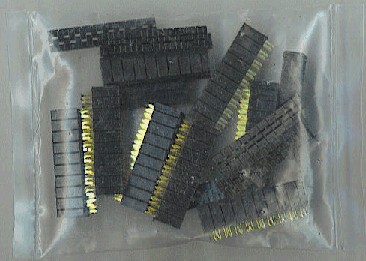
More ribbon cable sockets can be purchased through NI (P/N:778962-01). The vendors of compatible connectors can be seen on the following table:
Accessory
| Manufacturer
| Part Number
|
2x9 0.100 in. Pitch Ribbon Cable Connector
| Samtec
| IDD-09-H
|
0.100 in. Pitch Cable Connector Assembly (0.100 in. Pitch Connector and 0.050 in. Pitch Ribbon Cable)
| Samtec
| IDSD-09 Series
|
You can use any 0.050 in. pitch ribbon cable with the TB-2630B. To use a ribbon cable with more than 18 conductors, remove the unwanted conductors before using.
To connect signals to the PXI-2530B via the TB-2630B, attach ribbon cable connectors (with corresponding ribbon cable) into the desired banks of ribbon cable headers. Ensure that the ribbon cables are properly reinforced by the strain relief bar, and then attach the terminal block cover. The terminal block can then be connected directly to the switch via the mating connectors as shown in the following figure:
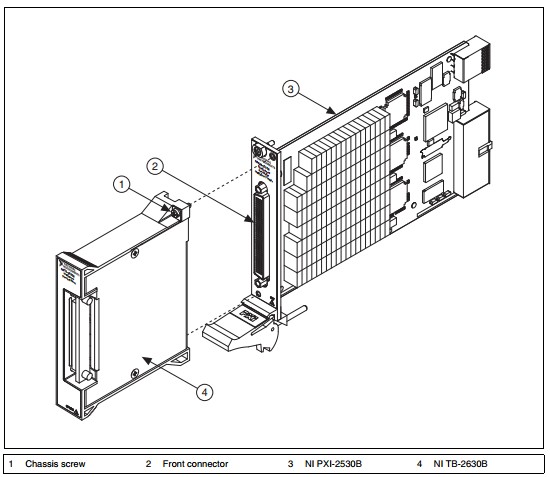
To determine the channel mapping for each topology or how the signals are routed open the NI Switches Help and navigate as follows: NI Switches Help >> Devices >> NI PXI-2530/2530B >> NI PXI-2530B Signal Connections and select either 1-Wire Multiplexer Topologies, 2-Wire Multiplexer Topologies, or 4-Wire Multiplexer Topologies. An example of the channel routing can be seen below.
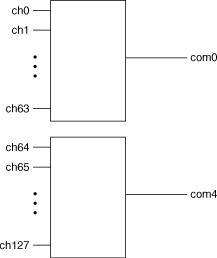
TB-2631B
The NI TB-2631B configures the NI PXI-2530B high-density matrix switch as a 4x32 (1-wire) or 4x16 (2-wire) matrix. It provides direct signal wire connections to the screw terminals inside the terminal block.
Below is a summary of how to connect signals to a PXI-2531B using a TB-2630B. For more information than is provided in this tutorial on connecting signals using the TB-2631B please see the TB-2631B Installation Instructions.
The figure below outlines the main components of the TB-2631B:

The figure below clearly outlines how the screw terminals on the TB—2631B map to the rows and columns of the PXI-2530B:
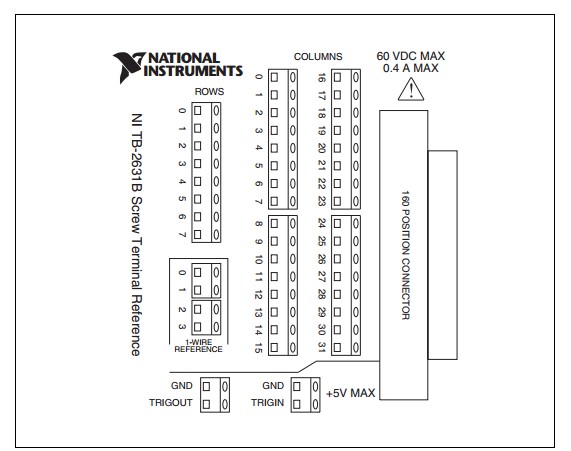
To determine how the screw terminals map to the channels of a particular topology for the TB-2631B, open up NI Switches Help and navigate as follows:
NI Switches Help >> Devices>> NI PXI-2530/2530B >> NI PXI-2530B Signal Connections and then select either 1-Wire 4x32 Matrix Topology or 2-Wire 4x16 Matrix Topology.
Below is a diagram of the TB-2631B outlining the various connections:
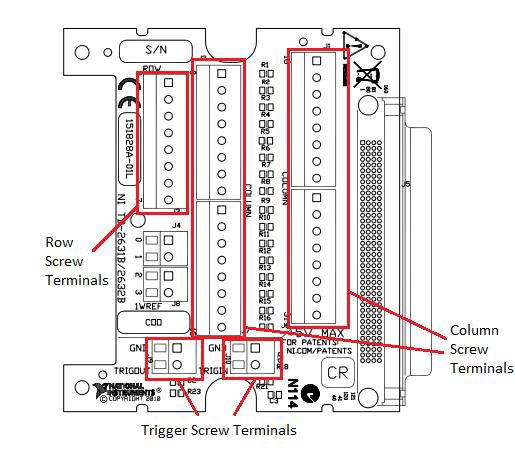
To connect signals to the PXI-2530B via the TB-2631B, screw the leads into the screw terminals as required, ensure that the leads are properly reinforced by the strain relief bar and then attach the terminal block cover. The terminal block can then be connected directly to the switch via the mating connectors as shown in the following figure:
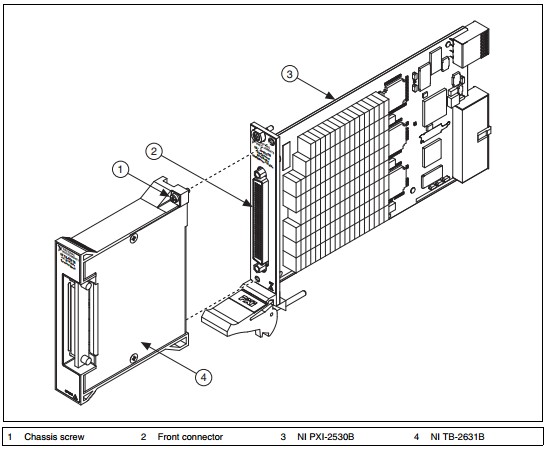
TB-2632B
The NI TB-2632B configures the NI PXI-2530B high-density matrix switch as an 8x16 (1-wire) matrix. It provides direct signal wire connections to the screw terminals inside the terminal block.
Below is a summary of how to connect signals to a PXI-2530B using a TB-2632B. For more information than is provided in this tutorial on connecting signals using the TB-2632B please see the TB-2632B Installation Instructions.
The figure below outlines the main components of the TB-2632B:
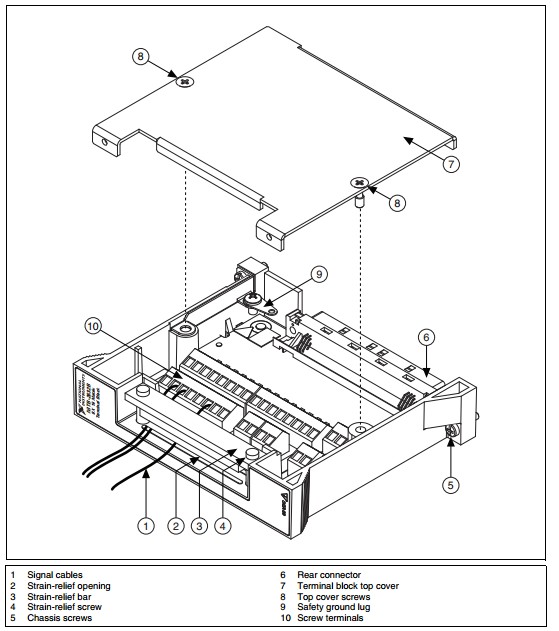
The figure below clearly outlines how the screw terminals on the TB—2632B map to the rows and columns of the PXI-2530B:
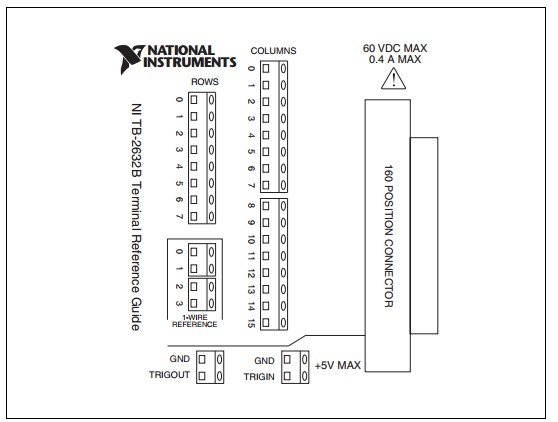
Below is a diagram of the TB-2632B outlining the various connections:
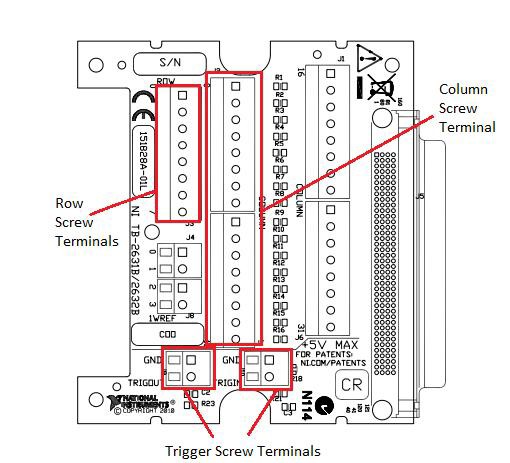
To connect signals to the PXI-2530B via the TB-2632B, screw the leads into the screw terminals as required, ensure that the leads are properly reinforced by the strain relief bar and then attach the terminal block cover. The terminal block can then be connected directly to the switch via the mating connectors as shown in the following figure:

Custom Termination Options for the PXI-2530B
The PXI-2530B can also be utilized without the TB-2630B, TB-2631B or TB-2632B terminal blocks by using a cable and remote terminal block.
Below is a figure of the pin-outs for the PXI-2530B that will correspond to the pinout of the cable.
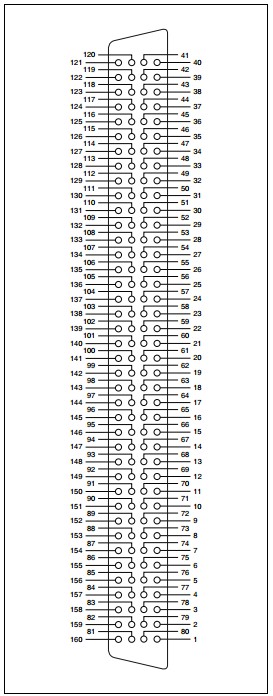
NI 160-Pin Cable to 4x50-Pin D-Sub
The 160-Pin LFH to 4x50 Pin D-Sub Cable can be used to connect to the PXI-2530B. Note that this cable is for multiplexer use only. Matrix topologies are not supported. See the 160-Pin Cable for the NI PXI-2530B Installation Instructions for more information on the cable mapping and pinout.
The TBX-50B can be used as a remote terminal block with the 160-Pin LFH to 4x50 D-Sub cable. The TBX-50 give the user easy access to the switch signals via screw terminals.
Related Resources
- Main Page: NI Switches Cable and Accessory Compatibility
- Matrix Switch Modules: Switches Cable and Accessory Compatibility
- Multiplexer Switch Modules: Switches Cable and Accessory Compatibility
- 160-Pin Cable for the NI PXI-2530B Installation Instructions
- How to Connect Signals to an NI Switch
- NI Switch Mating Connectors for Custom Solutions or Cables
